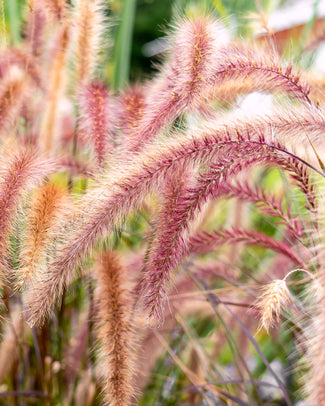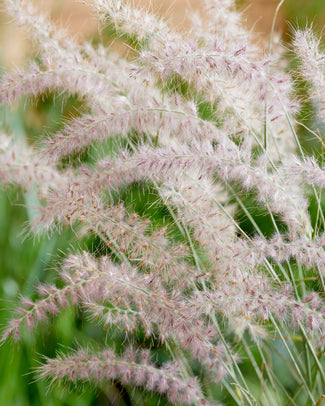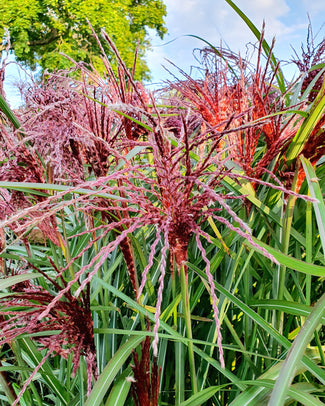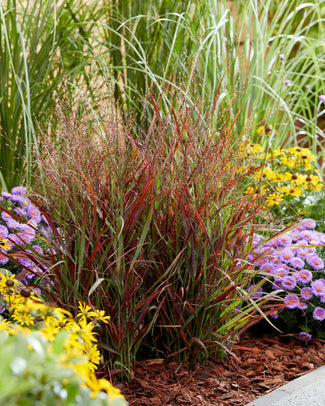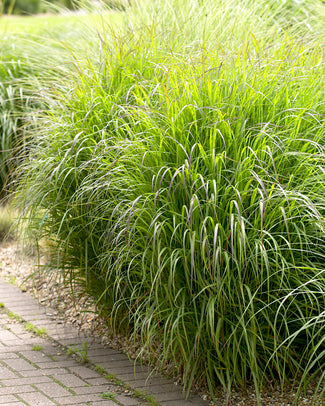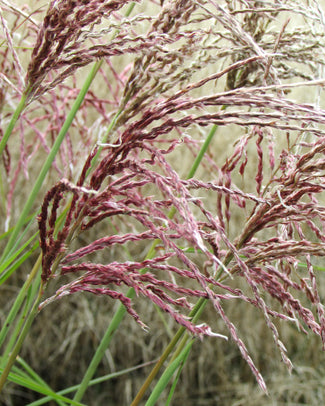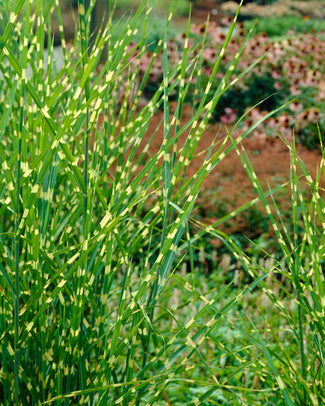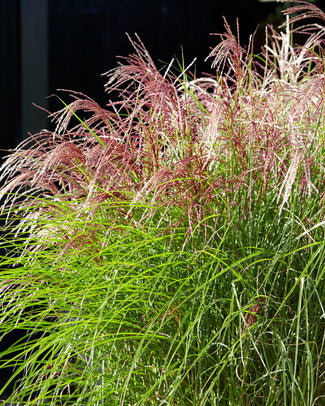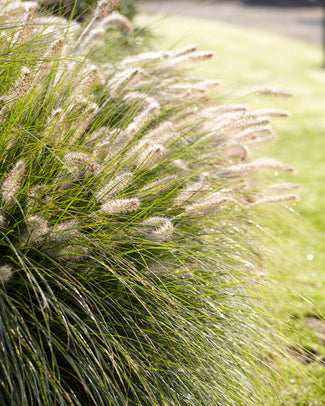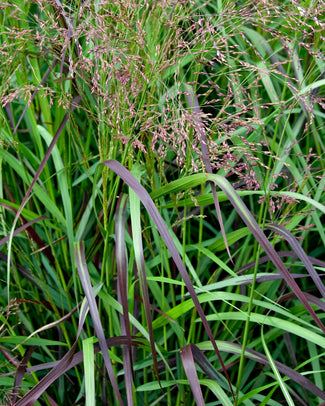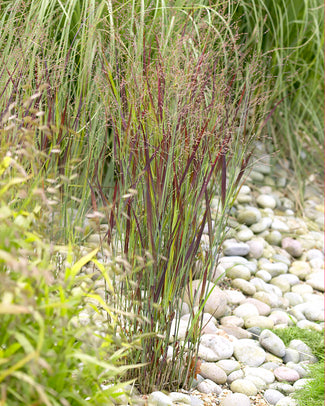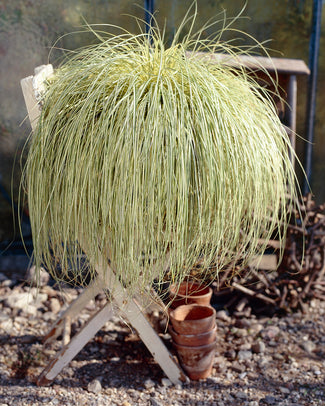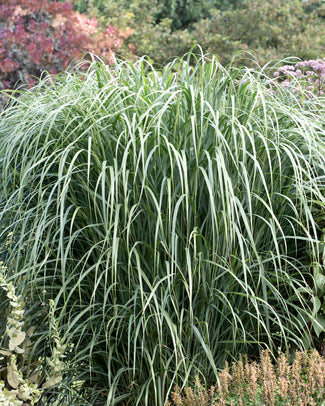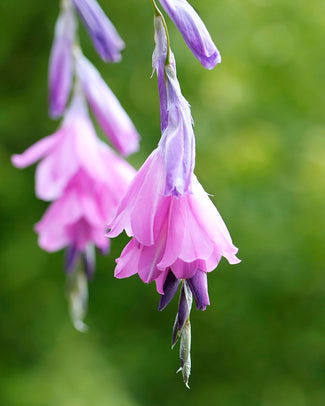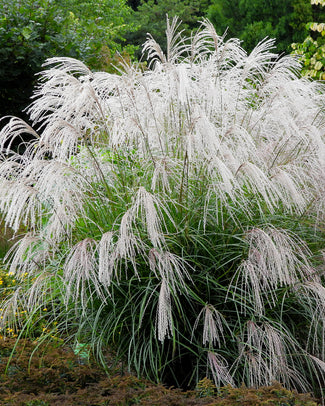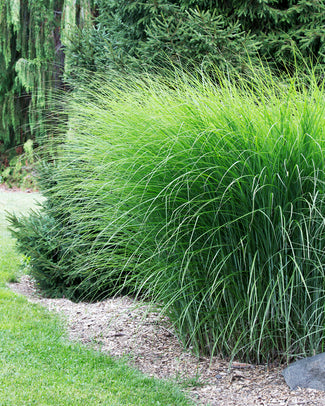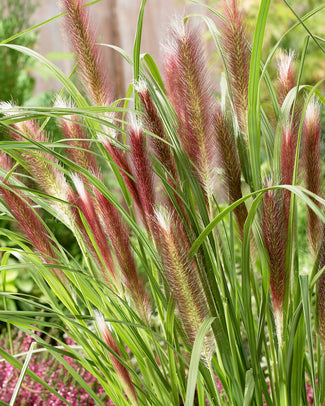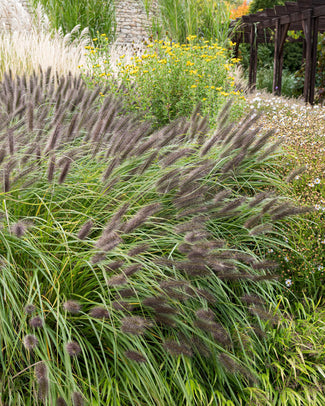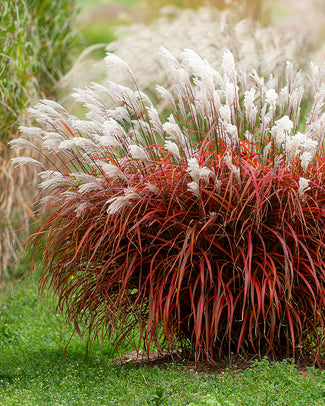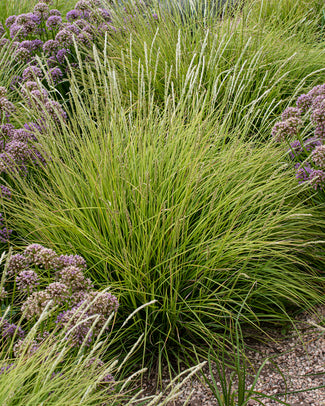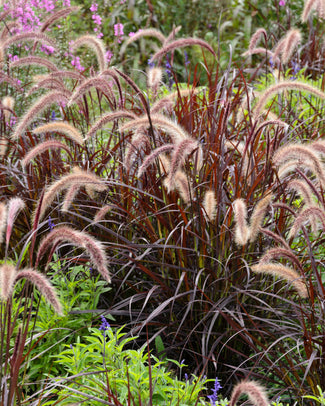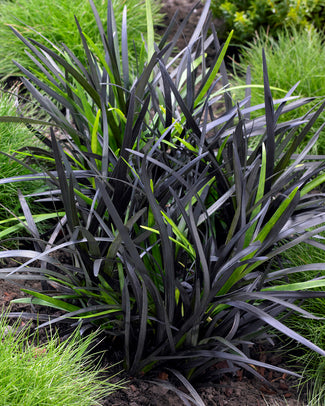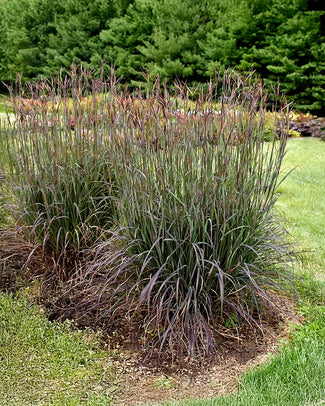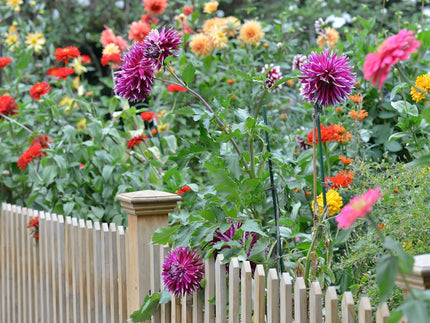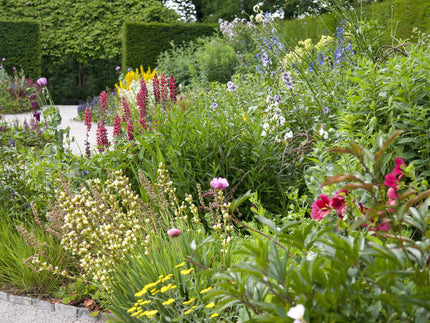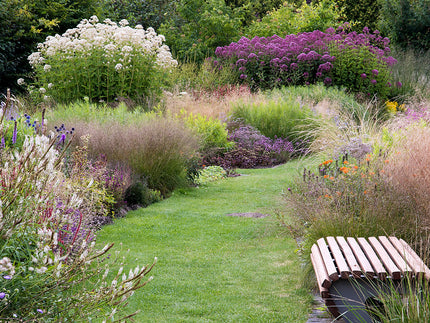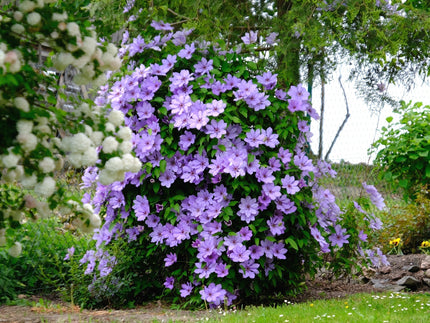How to plant Miscanthus
Miscanthus are reliable and versatile ornamental grasses, also known as Elephant Grass. Arching green foliage develops from spring onwards each year, followed by feathery plumes of white through to pink flowers in late summer, which give textural interest and movement to the border which last through autumn and well into winter. Taller varieties provide a useful and attractive screen, they also bring texture, height and movement to mixed borders. During autumn the foliage and plumes will become a pale caramel colour, and will remain until cut back in winter or early spring.
How to plant
- Plant Miscanthus in spring between February and May, ideally within a week of delivery.
- Soak the roots in water for 3-6 hours prior to planting. Pot into temporary 2 litre (or 15-20cm diameter) pots, using a good quality multi-purpose compost.
- Plant with the roots fully submerged in the compost. There will be some old foliage from the previous year which is cut at around 10cm. This should be left exposed above the soil surface. New shoots will emerge from the base of these dried stems.
- Grow them on in a sheltered spot outside. They can be transplanted to suitable growing positions after 2-4 months or once growth is established and the plants easily come out of the temporary pots with the soil held intact by the roots.
- When they’re ready to plant into the garden, choose a position in full sun or very light shade. Miscanthus tolerate most soil types but do need good drainage. They don’t typically tolerate wet soils. Dig over the area first to aerate the soil and remove any weeds.
- Keep the area around your new plant clear of weeks and excess growth from neighbouring plants.
- This ornamental grass is fully hardy and doesn’t require winter protection.
- Water-in after planting and keep hydrated when in growth, particularly during the first year. Once fully settled in, they can cope with quite dry conditions.
Aftercare
- This grass should be cut back as to around 5-10cm above ground level each year during winter or early spring. New growth will emerge from the base of the plant in spring.
- Miscanthus forms a clump over time and the show gets better every year. Clumps that have become too large can be dug up and split with a sharp spade in winter or early spring. Each piece can then be planted separately.
- If cutting back the past year’s growth in spring, be careful to avoid cutting the tips off the new foliage as it is emerging.
































































































































































































